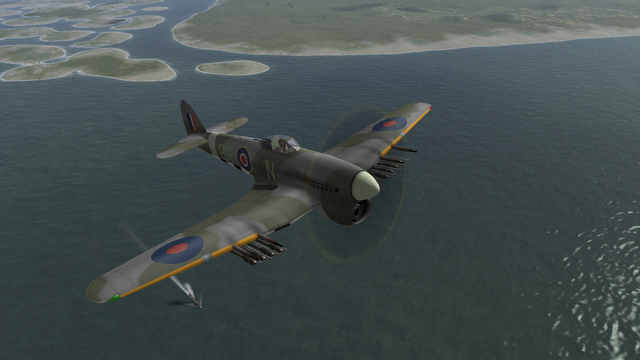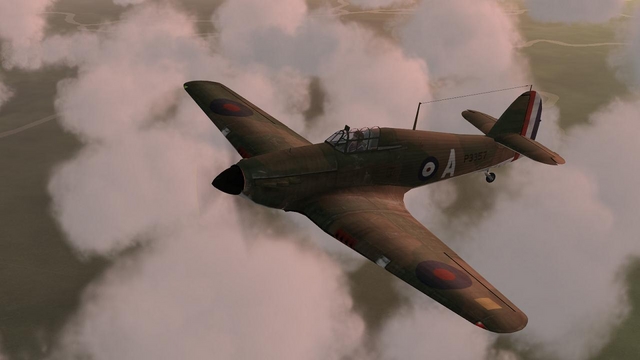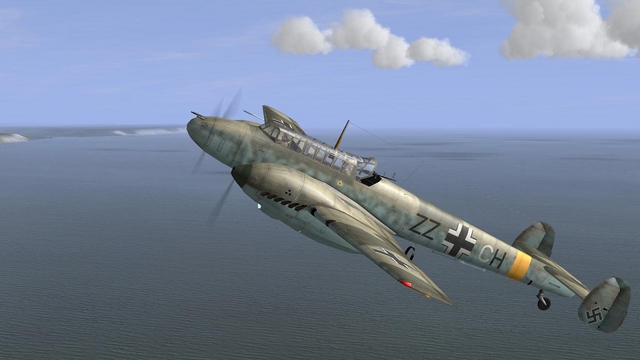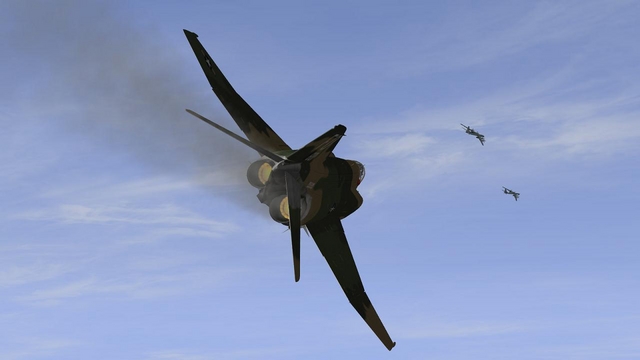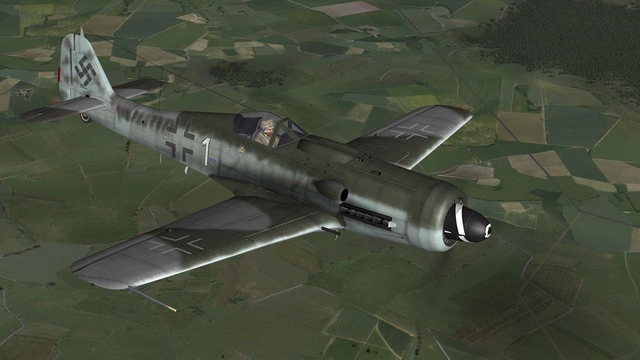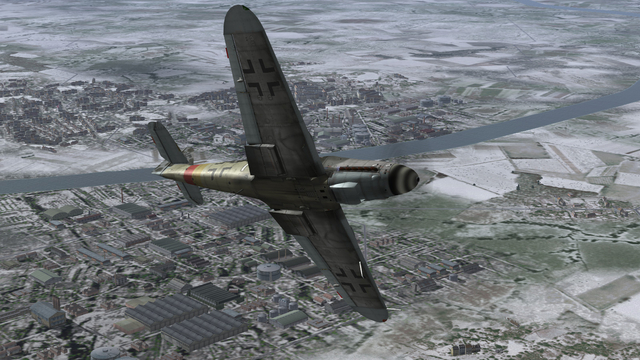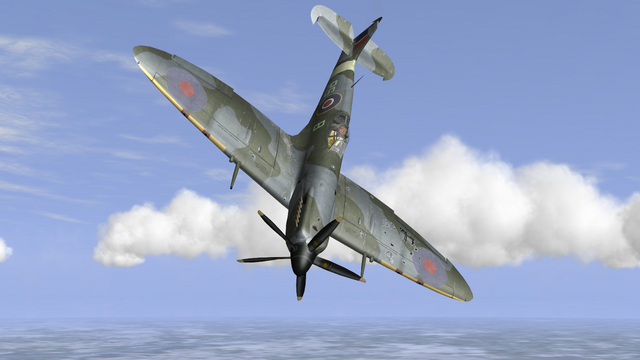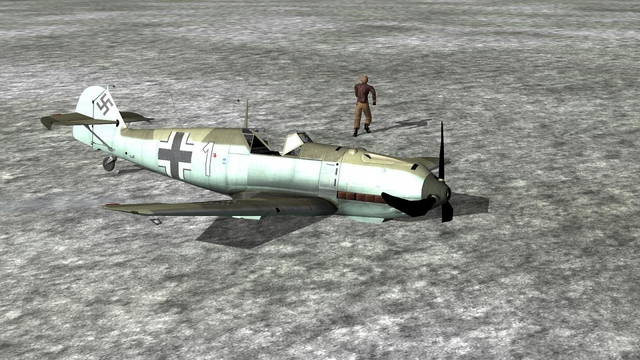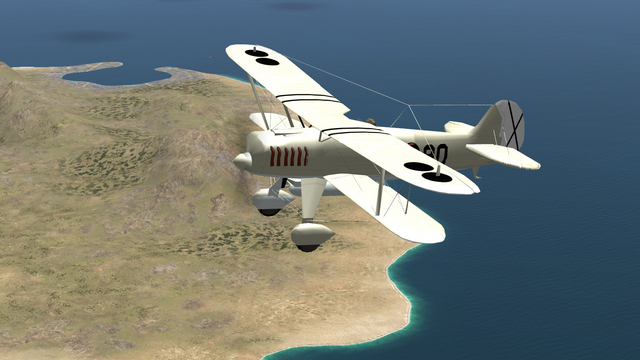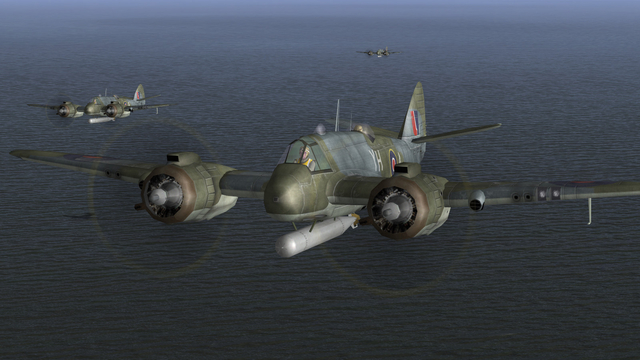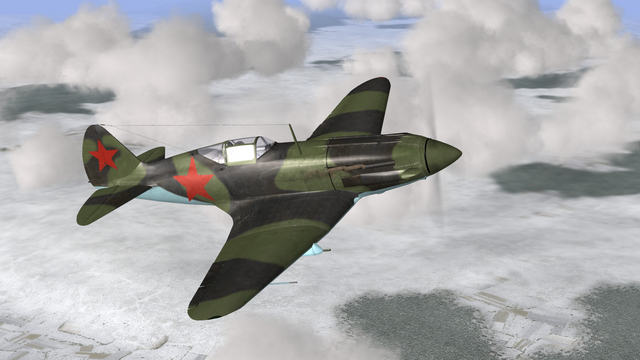Search the Community
Showing results for tags 'il-2'.
Found 118 results
-
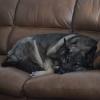
Getting IL-2 1946 up to date.
KJakker posted a topic in IL-2 Series / Pacific Fighters / Cliffs of Dover: General Discussion
I think I installed the Daidalos Team patch back in 2012 but it has been years since I touched it IL-2 1946. I would appreciate some advice as to patching, updates, and mods. -
From the album IL-2 Dark Blue World
-
Flying World War 1 from the start, with some new campaigns for Il-2's CUP mod! The recent Combined User Patch (CUP) for Il-2 1946 now has four modules: Dawn of Flight for World War 1, Golden Age for the inter-war period, Wings at War for WW2, and the Jet Age for the post-war era. For the first of these, SAS's Monty, of The Full Monty fame - the Il-2 mod, not the movie! - has just released a set of scripted-mission campaigns. And naturally, being long interested in the air war of that period, this was one that I wasted no time in trying out. So far, the first part of an eventual 32 'mission set campaigns' is available, and you can find the details over at the SAS forum, here. Most unusually for a WW1 sim, what this first part gives us is the ability to fly from the very start of the First World War, in August 1914. The first mission set - 'Demarcation' - kicks off in the Vosges, where the demarcation line ran between the French and German empires or that period. Up to now, the earliest WW1 flight sim missions have flown have been from the era of the Fokker Scourge in the summer of 1915. So while I knew not to expect too much in the way of air combat at a time when most aircraft were unarmed and those that were, generally relied on carbines or pistols carried aloft by their crew, I was keen to try out something new, with the option of jumping ahead any time I wanted; in particular, the 1916 Verdun campaign tickled my fancy, with the opportunity it seemed to fly as the famous Jean Navarre, whose Nieuport Bébé, painted red before von Richthofen copied him, was the terror of the Boches and the hero of the Poilus. The 'Demarcation' campaign is the first mission-set in the series and sees the player flying a Nieuport N4 monoplane. This famous French company is of course more famous for their V-strutted fighters starting with the Nieuport 10 and 11. But pre-war, Nieuport was noted for its racing or sports planes including a line of neat monoplanes, from which comes the aircraft I’ll be flying on this campaign. There’s some more info about the type on Wikipedia, here; evidently the type was quite widely used, albeit in small numbers, notably by the Russian Air Service. For this campaign I’m with the French air service, which was probably the biggest and best of the combatant air forces at the start of the war and in the thick of it from start to last. In the early months of WW1, aircraft were purely for visual reconnaissance and were not routinely armed. Rare exceptions included the Farman of Louis Strange, 5 Squadron Royal Flying Corps, who contrived to fit a Lewis Gun, only to be ordered to remove it after the extra weight resulted in the aircraft failing to get high enough to intercept a snooping German warplane. Thereafter, pistols and carbines remained the only (generally ineffectual) option for aircrew who fancied having a crack at their opposite numbers in the air. The first air-to-air ‘kill’ came in October 1914, when Sergeant Joseph Frantz and Corporal Louis Quénault brought down a German Aviatik; Quénault reportedly had to finish the job with a rifle after his Hotckhiss MG packed it in. As I was soon to discover, my single-seater Nieuport is armed from the get-go, with what looks like a Danish Masden mag-fed LMG. The real catch is that it’s mounted to fire upwards to clear the propeller arc, this being before the introduction of deflectors or interrupter gear. Lanoe Hawker had some success in 1915 in a Bristol Scout with a Lewis gun mounted to fire left and ahead so this arrangement isn’t entirely untypical of the sort of lash-ups early aviators made from early in the war, to get a decent crack at the enemy in a single-seater, with no observer to man a flexibly-mounted gun. Here’s the mission brief. It's just as well I've got the MG, because apparently, the enemy fliers have been activer over our territory. While my patrol zone is marked as a recce objective (eye graphic on a yellow triangle) our aims are offensive in nature. It's a defensive patrol, for two of us, though by the sound of it, my companion’s dodgy motor means that I might be alone. We don’t have far to go, in the horizontal sense anyway. But this is the Vosges and elevation will be a different matter, as I will soon find out. Typically for these new missions, you can forget about one of IL-2's most useful navigational map aids - there's no minimap path. This is 1914 after all, just over ten years from Kittyhawk and Orville and Wilbur's first successful flights in a heavier-than-air flying machine. Intrigued to find out how my first venture into virtual 1914 military aviation will work out, I wasted no time launching the mission, having made sure that in the difficulty settings, I had turned off flutter and wind effects (which the WW1 flight models can’t cope with – IIRC they result in planes having regular attacks of ‘the wobbles’). And this is what I saw. Truly, our airfield is a veritable diorama, packed with people, vehicles and other aircraft. While the people aren’t animated, it’s still an impressive spectacle, packed with interest. My number two tried a couple of times to get his engine running but each time it spluttered to a stop; possibly just as well as the bloke in front of him seemed disinclined to get out of his way. My motor showed no such reluctance and after a quick look around I decided to take off straight ahead, without worrying about runways. This worked out just fine, my lightweight aircraft lifting off at a speed which didn’t seem much faster than some of the trucks motoring around the airfield. Sitting roughly at mid-chord above a broad wing, it was obvious I wasn’t going to see much from the cockpit. The Voisins and Farmans parked around the airfield would have made much better reconnaissance machines, and indeed they served on after Nieuport monoplanes had disappeared from the front lines. Flying from the external view, I got a much better view of both my aircraft and its surroundings. And fine surroundings they were. Our airfield turned out to be on a little plateau set into the side of an impressive mountain, which comprised a series of peaks with lower ‘saddles’ in between. I resisted the temptation to play that song from that musical, but the hills, if not alive with the sound of music, certainly looked worth the trip. After a bit of sight-seeing, orienting myself with the help of the map, I realised that my reconnaissance objective had been rather inconveniently sited at the top of the highest peak. As my rate of climb seemed to be rather close to the ‘imperceptible’ end of the scale, this presented me with a bit of a problem. Throttle fully open, I settled into the best climb I could manage on a course parallel to the long side of the ridge or peaks. Compared to the WW2 planes I’m used to flying in Il-2, it felt like I was in a powered glider, and a nose-heavy one at that. Heck, this ‘racing’ plane felt slow, compared to the WW1 planes I’d flown in other sims. Slow...but not too sedate, with a tendency to dive away or begin a roll to either side, if I didn’t concentrate on keeping things level. With little dihedral, a small unbalanced rudder and wing warping for lateral control, this seemed to make sense. Quite an interesting experience in itself, the flight was shaping up to be. Realising that I was not going to gain enough height on one leg, I could not resist the temptation of turning right and crossing the ridgeline over one of the saddles. Even getting high enough to do this, took a certain amount of time and effort and I just scraped across. Having gone over the mountain to see what I could see, like the bear in the song the result was not unexpected – the other side of the mountain. I now flew a long leg away from the objective to gain sufficient height. That done, I turned around - gently, so as not to lose any of my precious height - and made my way back, aiming for the top of the correct peak. Finally I was right over the summit. I should have over-flown my objective to one side or the other, but I was quite keen for my track on the map to intersect the centre of the target marker, lest such precision was needed for mission success or to trigger some necessary mission event. In fact it worked – I got the ‘mission completed’ text so that was it. And I didn’t get shot at, or even see a single enemy aircraft. They were there, though, but I only realised that later, when I noticed an enemy aircraft icon on a screenshot which I had taken with the mini-map view briefly turned on!!! To be honest, I'd sort of forgotten the briefing, having been so taken up with the actual flying side of the challenge. And I had become rather fixated on overflying that big marker, as if I were genuinely on a recce flight. Anyway, the top of that mountain was about as bare as a mountain-top can be. Giving up on earlier ideas about putting in a flypast at the castle I’d seen on a lower peak nearby, I decided that honour had been satisfied; it was time to go home. A nice hot brandy in the Mess would help me recover from the rigours of flying amongst the mountains in my little powered glider. Down we went. The early aviators were in the habit of turning off their motors during a descent but I just cut the throttle to idle and experimented a bit with diving angle and airspeed. The unfamiliar flight model I found quite convincing; I have no idea at all how a real Nieuport 4 handled but this one felt just about perfect, for such an aircraft. It wasn't long before I was turning onto my final approach...although to the wrong airfield I believe, a deceptively-similar one on a similar mountainside plateau. I must have had my mind firmly set on that brandy! For a sortie on which I'd missed my opportunity to have my first air fight, I'd actually found the experience surprisingly absorbing. I think I'll try at least one more campaign mission in the Nieuport 4, before moving on to something more warlike. There's just something about the mission which seemed to capture so well the experience of stooging around in an aircraft that is little more than a docile but ungainly powered glider..albeit one with a sting. ...to be continued!
- 3 replies
-
- 2
-

-
- dawn of flight
- il-2 ww1
-
(and 1 more)
Tagged with:
-
From the album Combat Sims
-
Flying a vanilla campaign in the classic WW2 sim's latest mod! You can say what you like about the newest addition to the Il-2 line, Battle of Stalingrad (BoS) - and many of us do just that! But one thing it has done for me, is stimulate my interest in its predecessor's original, Eastern Front campaigns. No mean achievement, that, for until relatively recently, I'd regarded Il-2 as mainly offering planes I didn't especially want to fly, in places I didn't especially want to fly them, to adapt another simmer's comment. At the moment, I have two installs of Il-2 1946 - one for Dark Blue World (DBW), the other for the new Community User Patch (CUP). Due to different files, units and other factors, it seems likely to take a while, before many campaigns that work in DBW or other versions of Il-2, also work in CUP, though some already do and the list is growing steadily. Both to check out the compatibility of some stock Il-2 campaigns with CUP and to indulge my new-found interest in the Eastern Front variety, over the last month or two I've been running, on and off, a standard Soviet fighter campaign, flying one of the aircraft available in BoS - the rather sleek but not especially high-performing LaGG-3. Like other aircraft before and after, this seems to have been a basically decent design which needed a more powerful engine to turn it into a competitive fighter - which it got, when its inline engine was replaced by a radial, creating the Lavochkin La-5. From this campaign's timeframe, though, the La-5 is about a year away. It's July 1941, just weeks into Operation Barbarossa, and I'm flying a LaGG-3, defending our dearly-beloved Union of Soviet Socialistic Republics against the fascist hordes of Nazi Germany. And an interesting challenge it's been, keeping my virtual neck intact, up against superior numbers of superior planes and - historically, anyway - superior aircrew. So far, courtesy it seems of some Soviet Socialistic miracle, I have not only survived, but knocked down some enemy aircraft. I'm on my fifth mission, no less...but wondering how much longer my good fortune can possibly continue. Here's the latest briefing. As you can see, it's a fairly straightforward escort job, with a hint that we might want to shoot up some stuff on the ground at some point, too. Maybe it's a difficulty setting I applied when I created the campaign, but the usual Il-2 red and blue front lines aren't shown on the map. But I'll be able to gauge the whereabouts of the enemy from the front-line target the bombers we're to escort will hit. Happily, the target's not too far off, so I can fly the mission in real time with no need to use 'warp'...which as just as well, as Il-2's never had that, relying on autopilot and time acceleration. The briefing doesn't tell me how many are in our flight, or the type and strength of the bombers. Nor do we get their or our altitudes. I put this down to a level of uncertainty, even confusion, in an air force with its back against the wall...or perhaps, against a Commisar with a small-calibre pistol and a willingness to employ it, in stiffening our resolve, should that become necessary. At the flight line, I find that there are in fact three of us on this hop. Having chosen a high enough rank to avoid the (to me) hateful chore of formation-flying - and to enjoy the extra challenge of flight leadership - I'm at the head of the queue. This being a stock mission, there's none of the newer formation takeoffs. Happily, the default Il-2 conga line is a short one, today. The current LaGG-3 I find is a nicely-rendered bird. More rounded contours in some places, inside and out, would be nice but I'm not complaining. Her authentic, subtly-weathered camouflage and national markings are convincingly-applied. There's no sign of the original opaque Il-2 markings, which looked like the over-thick waterslide transfers you used to get on plastic kits, guaranteed to blot out all but the crudest surface detail. And the cockpit, though clearly well behind the latest self-shadowed, finely-curved marvels, is still quite serviceable. One new feature the LaGG does enjoy are more rounded wheels, and very welcome they are, too. Soon, I was aloft and retracting the gear. After the crazily finnicky ground handling of BoS, takeoffs in '46 are...well, whether more realistic or not, more what I'm used to. Another, older improvement to Il-2 that the modders have wrought is the engine sounds. I absolutely loathed the dreadful external engine drone of the original sim. That's a distant memory now, so I can admire my bird in the external view without feeling that I need to turn down the sound. In fact, so much was I enjoying the external aspect of my LaGG sweeping over the Steppes, that I decided to let the autopilot fly, for a bit. There was now sign of the bombers and I thought, rightly as it turned out, that my alter ego would have a better idea than I, were they were and at what height we should be. My number three lagged (sic!) for a bit but my number two wasn't long in catching up. We perhaps tend to take for granted these days such Il-2 wonders as different planes having different individual numbers but even now, not all sims have this and it's still a fine thing to behold. Three of us had left our airfield. How many would return, and would I be amongst them? The answers would not be long in coming. ...to be continued!
-
To war in the China-Burma-India theatre with the American Volunteer Group! There can be few more famous flying units in the Second World War than the group of volunteer fighter pilots recruited in 1941 by retired US Army Captain Claire L. Chennault to help China turn the tables in the beleagured country's air war against the Japanese. Flying Curtiss P-40B Tomahawks diverted from planned deliveries to the RAF, the three squadrons of the American Volunteer Group (AVG) soon found themselves pitched alongside RAF and Dutch comrades into a desperate, losing battle against the post-Pearl Harbour Japanese flood tide, notably in Burma. The AVG and RAF initially mounted a spirited air defence of the capital Rangoon. But as enemy ground forces swept towards them, capturing airfields closer and closer to the city, their task became increasingly hopeless and in the end, abortive. Nicknamed 'Flying Tigers' from the insignia devised from them by Disney, the unit was of course famous for a different marking - the gaudy 'Sharkmouth' on the noses of their P-40s, inspired it is said by a similar marking seen on a photo of a 112 Squadron RAF Tomahawk, itself supposedly inspired in turn by the 'Haifisch' marking carried by Bf 110 heavy fighters of ZG 76. Fame came early to the Flying Tigers, not least thanks to the 1942 film starring John Wayne, no less, that many of us will remember from later screenings on TV. The characterisations appear but crude stereotypes today, but at the time, the desperate and destructive war in the Far East was at its height. Thanks to Chennault's experience in theatre, the Flying Tigers were early pioneers of the sort of 'hit and run', 'boom and zoom' tactics that soon became widely adopted, for combating the more nimble but less powerful Japanese fighters. The AVG fought shoulder to shoulder with British and Commonwealth comrades in Burma and after the latter's fall, to defend China's vital lifeline of supplies flown over the 'hump' from India. But those battles and others against Japanese offensives in China, were fought mainly by the AVG's USAAF successors, who inherited the nickname and the fighting reputation of the original group, which was disbanded in July 1942. The campaign There have been several AVG campaigns for IL-2 over the years but the one I'm flying here is SAS_Monty's, which was designed for the modified 4.12 version of the sim, which is what I'm mostly flying at the moment, since the arrival of the Combined User Patch (CUP) mod. You can find the download link, a campaign video and some more info, here. Another attraction for me is that the campaign features the defence of Burma, which I had read about in the detailed and generally excellent first volume of Grub Street's aptly-named South-East Asia air war history, 'Bloody Shambles'. Fans of Kipling will relish the opportunity to fight (altogether now) 'On the road to Mandalay/Where the flying fishes play/And the sun comes up like thunder/Out'a China, cross the bay'. It ain't half hot, mum! But enough of references to now politically-incorrect writer-poets and BBC TV comedies about the vital role of Concert Parties in the war in the Far East. If you are expecting to be pitched straight into desperate dogfights against Nates, Oscars and Sallys - to use the Allied reporting names for the Imperial Japanese Army's Ki-27 and Ki-43 fighters and Ki-21 bombers - well, steady there, (flying) tiger. Battleship Row at Pearl still lies undisturbed and the war in the Pacific, unstarted. Your first job - after watching the neat black & white opening video 'track' which accompanies a narrative intro to the AVG - is a ferry flight in a C-47, from Rangoon up to the AVG's real-life training base further north, at Toungoo. This starts well enough, with time to admire the plentiful scenery at busy Mingaladon airfield, just north of capital Rangoon. Like the P-40s you'll be flying later, the two C-47s on this flight - we should probably call them DC-3s, in keeping with the secrecy necessarily surrounding this surrogate US intervention - may be ex-USAAF; but for now, they're the property of the Government of nationalist Chiang Kai Shek's Republic of China. And marked accordingly. The USA isn't in this war, officially...not just yet, anyway. I'm not a big fan of civvy flight sims but I must admit I got a certain amount of fun out of flying my Dakota, as the C-47 is generally better known in the UK. It took a lot of key tapping - no fancy HOTAS setups here - but in the end I was able to trim her nicely to climb 'hands off', although what I expect was a bit of a crosswind, or maybe a bit of aileron trim she needed, made occasional corrections necessary to keep wings level. The flight up north in a heavily-laden transport was actually like one of those civilian flying challenges in FSX. The tricky bit was...well, not my pet hate, formation flying, since you don't especialy have to fly in close company with the other aircraft on this trip, though he will tell you off on the radio if you become too independent. It's first, (slowly) climbing through the clouds - a good idea, to avoid colliding with the Pegu Yomas which rise across your fligth path. You get radio becaon fixes displayed every so often but if like me, you generally 'cheat' by leaving switched on the minimap path and your aircraft's icon, such things aren't really needed. Having got above the darkening clouds, all was well, for a while. I tried to listen in to radio stations duing the flight, as the mission brief recommends, but though I tuned into both BBC World Service and Radio Honolulu, reception seemed basically non-exstent. So much for listening to Vera Lynn's latest number, to while away the dull bit of the flight. The next fun comes when it's time to descend through the cloudbase. At first all looked well, with the tree-covered foothills falling away beneath usand paddy fields appearing ahead. There's a great new Burma map included with CUP and I'm assuming this is it. The cloud ceiling was quite low and when I got to that level, the weather was suddenly awful, with visibility to match and lightning flashing, in and below the clouds, as the rain lashed down all the while. Then, in the deteriorating weather, there's the challenge of finding my destination. Finally, I actually had to land there, which was going to be tricky enough in the pouring rain, not least because the layout of Toungoo airfield was unknown to me and was going to be invisible in the murk, until i was pretty well on top of it. in the circumstances, I decided to let the autopilot handle the last leg and I'm glad that I did, because two interesting things happened, that I might otherwise have missed. First, during a spell of slightly clearer weather, we suddenly did a supply drop, which I hadnt been expecting. Next, I had a great view of Toungoo itself, the town not the airfield. At first, I thought this was Fort Dufferin, famous for a 14th Army battle to evict the Japanese in 1945. But that's in a different part of Burma. It was quite a sight, nevertheless, worth seeing, if not worth going to see, as the famous diarist Dr Johnston once said of the Giant's Causeway (sorry, to anyone from the Burmese or Northern Ireland tourist boards, who might happen to be reading this). Happily, the AI co-pilot to whom I had turned over our aeroplane seemed to know the area well enough, for despite the murk he made a faultless, if somewhat unorthodox, partial, circuit, followed by a fine landing which I would have struggled to match, at the best of times. His ground handling was pretty good, too, and we were soon stopped next to the other C-47/DC-3/Dakota. Now, perhaps, we could get down to business! But, as in real life, Claire Chennault had other plans for his newly-arrived tiger cubs. ...to be continued!
- 11 replies
-
- 5
-

-
- flying tigers
- il-2
-
(and 2 more)
Tagged with:
-
First mission in a brand new campaign! Apart from the occasional mission, I have never seriously tried flying bombers in Il-2. I'm quite fond of shooting them down...or trying to, at any rate. I have flown bombers in CFS3 using that sim's simplified bombing system and in B-17 II The Mighty Eighth, with its much superior facilities, including a decent simulation of the Norden bombsight. However, having of late much enjoyed flying with Il-2's new Community User Patch (CUP), I decided it was time to get serious with bombing in this sim. The deciding factor was the recent arrival of a brand-new bomber campaign, made specifically for CUP and featuring one of my favourite aircraft, the mighty Avro Lancaster. I had enjoyed flying this big bird in Just Flight's excellent CFS2 'Dambusters' add-on and wasn't going to miss the chance to try her out in an Il-2 campaign...even if it meant sitting for long periods in a darkened room! The campaign is by Hamm66 and you can get it over at Mission4Today, here: http://www.mission4today.com/index.php?name=Downloads3&file=details&id=2137 '1942 Lancaster Tour of Duty' features ten semi-historical missions from the wartime career of 44 (Rhodesia) Squadron, RAF Bomber Command, apparently the first unit to re-equip with the Lancaster. We are based at RAF Waddington in Lincolnshire, a county where so many bomber squadrons were based for what became the great Allied bomber offensive against Nazi Germany. Here's the briefing for the first mission...an unusual one, to be sure. It's Christmas 1941 and - as in real life - the squadron is about to get its first Lancs. My 'mission' is to trundle down to the runway in a jeep and watch our brand new aircraft arrive, presumably flown in by RAF Ferry Command, recently formed to fly new planes to operational airfields. Just like ours. So I loaded up the mission and there I was, sitting in my jeep, alone. The weather was rather murky and it seemed the others had decided that their first close-up look at the new planes could wait. Fair enough! This was my first time driving a ground vehicle of any type, in Il-2. The silence suggested that starting my engine might be a good way to get going, so that's what I did. The joystick seemed to control things much as with an aircraft and I was soon on my way. But which way? I followed the track I was on, which led to a long, wide paved area which was obviously a runway. Here I stopped. I was reminded of the story told me by my late dad, who was a mechanic in the RAF, post-war, and served all over the world, much of the time, of all things, in an Air Sea Rescue launch. On this occasion he was based closer to home and on terra firma, at RAF Ballykelly in Northern Ireland. He was on a tea break, the problem being that the tea was being served from a NAAFI van which was over on the opposite side of the runway. He had a bike at his disposal and while it was of course strictly forbidden, there was nobody about and so he cycled straight across to the NAFFI van. As he was sipping his tea there, a Lanc came in and landed. But instead of taxying off to dispersal, the bomber came to a halt next to the NAFFI van. Out came the navigator, and ran across to the van. Who was the airman, he demanded to know, who had cycled across the runway a few minutes ago, causing the Lanc to have to break off its approach and go around? He had been despatched by the pilot to get that man's name. The presence of the bicycle next to my dad made denials rather fruitless! This was a mistake I wasn't going to make now! So I pulled up short of the runway, and I waited... ...and I waited. No sign of the Lancs. Was I at the right runway? Hard to say, but I decided to sit tight where I was. No point in incurring the wrath of the ferry pilots or worse, the Rock Apes (as Air Force people call the RAF Police, after those famously cheeky primates who inhabit the Rock of Gibraltar). Had the flight been cancelled, perhaps? It was Christmas, after all. But no, the party was still on. Undeterred by the rather poor visibility, the Lancasters were coming! And a fine sight they made, too, even though they were still carrying the squadron codes of an Operational Conversion Unit. Soon, hopefully, they would carry instead the 'KM' of our very own 'Forty-four'. Finally, I saw them, slipping into and out of the murk that lay all around, as they joined the circuit. By this time, they had shaken out into line astern and the landings could not now be long away. Soon, the leader was breaking off and then settling down into his approach. Of all this, I saw nothing. I WAS at the wrong runway, although I could hear the R/T chatter, which somebody was evidently blasting out on a loudspeaker for all and sundry to hear. Except that all and sundry were likely watching from the comfort of their respective messes, leaving me sitting out here in the cold. At the wrong runway. Enough! I daren't cross the apparently-inactive runway ahead even so but I'd sat there long enough. Off I went, seeming to startle a flock of geese, which took to the skies as I roared past...hopefully not heading in the direction of those other, much bigger birds now in the vicinity. Recklessly endangering Government property - to wit, four Avro Lancaster aircraft - by driving geese into the skies while they were landing, would make for an interesting Charge Sheet, but this was the RAF and anything was possible, in the pursuit those guilty of any form of of '..conduct to the prejudice of good order and military discipline'. I never did get to see the Lancasters land. Taking a turn too tightly brought my trip around the airfield to a sudden end. All I could hope for was everybody else was watching the bombers land, rather than my four-wheel drive aerobatics. Happily, the Lancs didn't put a wheel wrong, landing one after another, past a row of rather obsolete-looking Whitleys. Once down, each machine taxied out to a dispersal point. Soon all were down. The first of our new warplanes had arrived. From here on in, it was over to us! ...to be continued!
-
From the album Combat Sims
-
From the album Combat Sims
-
From the album Combat Sims
-
From the album Combat Sims
-
From the album Combat Sims
-
From the album Combat Sims
-
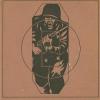
Bf 109K, Il-2 1946 + CUP, CUP Western Front Winter terrain
33LIMA posted a gallery image in Member's Albums
From the album Combat Sims
-

Spitfire XIV, Il-2 1946 + CUP, CUP Western Front Winter terrain
33LIMA posted a gallery image in Member's Albums
From the album Combat Sims
-

Bf 109K, Il-2 1946 + CUP, CUP Western Front Winter terrain
33LIMA posted a gallery image in Member's Albums
From the album Combat Sims
-

Dornier Do 217M, Il-2 1946 + CUP, CUP Western Front Winter terrain
33LIMA posted a gallery image in Member's Albums
From the album Combat Sims
-

Bf 109E-1, Il-2 1946 + CUP, CUP Western Front Winter terrain
33LIMA posted a gallery image in Member's Albums
From the album Combat Sims
-
Another great Luftwaffe fighter pilot campaign from FlatSpinMan! Having thoroughly enjoyed his Defence of the Reich campaign, I was keen to try out another of FlatSpinMan's German campaigns and picked this one, for a change of scenery - and climate! No more footering about over the cold waters of the North Sea for me, it's 'Off to Darkest Africa', as the song goes. This campaign is a sort of a prequel, featuring the same Luftwaffe fighter pilot, Willi Jedermann, as the Reichs Defence campaign. This is available from Mission4Today, which site is unfortunately down at the time of writing, so I can't post a link. Edit, 5 Feb '15 - Mission4today, the ultimate Il-2 resource, is back up and you can get FlatspinMan's campaigns here. The campaign's first mission is a transit flight, simulating the arrival in force of the Luftwaffe, as part of the Deutsches Afrika Korps' 1941 deployment to prop up the Italian forces, after the latter's disastrous defeat at the hands of the British forces based in Egypt. Although there's no action, this mission is a nice scene-setter, featuting an air start with the player's Bf 109E-7, still in European theatre camouflage and carrying long-range tank, slipping in from the Mediterranean amidst a veritable horde of incoming German aircraft. The scene at the airbase I was bound for was equally impressive, with the field positively awash with German aircraft of all types! Apparently, our Willi has been posted to JG 27, which if course is the Luftwaffe fighter wing most closely associated with the war in the desert. However, before he can join his unit, Willi is scrambled at the head of a flight of three other pilots in transit, to intercept an incoming force of RAF bombers which is evidently hoping to smash up the tempting target presented by so much Luftwaffe aircraft and matériel sitting at this staging airfield. The plane I ferried in wasn't available so I was allocated been given another machine, 'Yellow 5'. Like my last mount, this still in Eurpoean camouflage but with a white theatre fuselage band and yellow quick recognition markings in the form of yellow cowling and rudder. My flight-mates were in similar interim markings, as you can see from 'Yellow 6' and 'Yellow 8'. As with FlatSpinMan's Defence of the Reich campaign, the inclusion of very high-quality 'skins', like these, is a nice feature. Our brief was to patrol at 2500 meters over the sea, just north of our base, watching out for the raid we're expecting. Once airborne, headed east, I cleaned up my aircraft and climbed out to about 1000 metres, then throttled back, to let my three flight-mates catch up. Climbing again, this time northwards out to sea, I could sea below and ahead a flight of tan-coloured biplanes, on the same course. Evidently, these were the Italian allies I'd been briefed would also be on this operation. Fiat CR 42s most likely, I thought. As I watched, the Italians, who had been climbing fairly gently, suddenly pulled up into a much tighter climb. Had they seen something I hadn't? The answer was 'Yes!' At least two flights of larger aircraft were coming more or less directly at us, slightly high. This looked like it! I pulled up my nose in an effort at making a head-on pass to begin with, though from the high closing speed I quickly realised I would be just too late. As the enemy ran in towards us, I saw that they were slim twin-engined bombers, and that a couple of tan-coloured monoplanes - more Italians, most likely - had beaten us to the punch. I quickly gave the flight the order to attack and pulled up and around as the enemy - Blenhiems, they were - swept past. No sign of a fighter escort, that I could see. Time to get stuck in, before they hit our base, which they would reach in a matter of a very few minutes...unless we could stop them! ...to be continued!
- 7 replies
-
- 2
-

-
- flatspinman
- il-2
-
(and 2 more)
Tagged with:
-
Concluding FlatSpinMan's Il-2 '46 campaign for the Bf 109! Having some months back posted reports for the first four missions in this entertaining and highly recommended campaign, I thought it was over-due time to complete the story! The Allied bomber offensive 1942-45 has always been a particular interest of mine and the ability of modded Il-2 '46 to support this - and other 'Western Front' campaigns - transformed my opinions of and interest in this classic sim, which, in its latest forms, is in my opinion still much the best combat flight sim for World War 2...and beyond. FlatSpinMann's Defence of the Reich campaign is one of several which enable you to pit your virtual life against the might of the USAAF's famous 8th Air Force in its campaign of daylight 'precision bombing'. You're cast as Willi Jedermann, an experienced member of the Jagdflieger whose Bf109's aft fuselage carries the white cross, black disc marking of the Nationalist Spanish Air Force, doubtless denoting time spent with the Condor Legion during the Spanish Civil War. The campaign comes with several nicely-rendered variations of the 'skin' for the player's Messerschmitt, the one below being for the 109G-6, to which the player transitions during the missions in this report, having started with the G-2. Earlier missions had seen our Willi transferred south from JG5 'Eismeer' in the frozen north to join I Gruppe, Jagdgeschwader 1 in defence of the Deutsche Bucht or 'German Bight', as they called the area of the North Sea bounded by Schleswig-Hollstein/Denmark to the east and the north German coastline near Bremen and Hamburg, to the south. That Willi is an alter hase, an 'old hare' who has seen it all before and then some, is clear from the mission briefings, which often feature Willi's frank expressions of his views, ranging from his reservations about operating so often over the seas on convoy escort, to his opinions on the latest bright ideas from his superiors. My fifth mission is a case in point. Willi is being sent aloft to practice air-to-air bombing of enemy bomber formations, prompted by the success achieved by real-life Luftwaffe ace Heinze Knoke (recounted in 'I Flew for the Fuhrer' and quoted in many other books). Willi is fairly scathing about the prospects for this tactic...but orders are orders! Soon, flying as Willi, I'm airborne and headed north, in rather murky weather with a 250Kg bomb slung under my Messerschmitt. I'm rather glad to be on my own. Level bombing in a bombsight-less fighter seems unlikely to go well and, methinks, the fewer of my squadron-mates who witness my efforts with this contraption, the better. Callling up the inflight map, I checked my bearings. Our base is at Windau, which Goggle tells me is these days called Ventspils and is in Latvia, on the Baltic Sea coast. A stock Il-2 map of this area is topographically not a bad substitute for the German Bight, though. I have been told that the target on this practice mission has been marked out on some muddy coastal land, in the form of something resembling a plan view of a formation of heavy bombers. I'm to bomb from about a thousand metres, apparently. On arrival, I first overflew the range, just to get a good look at what they have cooked up for me. It's not too bad a job, I soon find out: a series of large white crosses in a decent representation of an American heavy bomber formation. And there's a large white circle-and-arrow marking on the ground a few hundred meters short of the 'formation'. You can't see it in the screenie below because it's hidden by the junction of those canopy farmes on the left, but it wasn't too hard for me to work out that this marked my suggested bomb release point. It seems the idiots who dreamed up this aerial bombing nonsense have at least been thorough in laying out my practice target. What they hadn't done so well was explain how I was supposed to aim my bomb, given that on a straight run-in, both the 'formation' and the bomb release mark are hidden under my nose. I suppose they expect an officer of the Luftwaffe to be able to work out such things for himself. So that's what I did. I approached on an offset course and picked out a landmark inland to my right - to my left, there was only the sea - which was level with the aiming mark. Unfortunately landmarks were rather limited in this weather and in this neck of the woods but I picked out a reasonably distinctive point on the edge of a suitably-positioned forest. Nearing the bomb release point on this offset course, I made a sort of 'Z' curve, turning left to get the the aiming mark and the target in line and then back right, back onto the same course as before, but in line with the target somewhere under my nose. Looking to the right, when the aiming mark came level, I let go the bomb and turned right, mildly curious to see what happened next. Below you can see the bomb on its way down, about half an aircraft's length, directly ahead of my spinner. The results were a good deal better than I expected. The bomb went off just on the leading edge of the 'formation', close enough I thought to have done some damage. Had it been for real, lacking proximity fuses, the trick would have been to get the thing to go off at the same level, the problem being a three-dimensional one. As I came off the target, I got a bit of a surprise when I saw the shadow of a vic of aircraft flit across theground below and behind. At this point I suddenly remembered that the briefing warned me to watch out for the presence of some boys from a Jagdfliegerschule, who were on some training flights somewhere in the general area. Of course in concentrating on my bombing run I had completely forgotten about them. There were undoubtedly at a much, much higher risk of me flying into them, than bombing them. Looking around more carefully, I soon spotted the others, off to my right. Three Messerschmitts like my own, they were, also headed south, towards my airfield. I gave them a wide beth and watched as they dipped down directly towards the runway. For some reason they didn't land, but pulled up short of landing and climbed away. Drat! Now I was going to have to be more careful in making my own approach! As it happened, these three were not the trainees; or if they were, they were nearing the end of their course, flying operational types. The real trainees were also in the air, flying impressed Czech-built Avia B-534s. Having flown past my base on my right to keep my distance from the other 109s, I gradually let down to about 300 meters. I looked around again for the others and seeing nothing, turned right onto my base leg. The skies remained murky but clear of aircraft and it wasn't long before I was down. As I completed my roll-out, I heard two other aircraft advising they were going around and the tower acknowledging. So I opened up again and smartly cleared the runway, steering towards the hardstanding in front of the hangers, at the left end of the long grass strip. I thought to myself, that wasn't too bad, unfortunately...'unfortunately' as only a complete disaster seemed likely to offer any hope of the next step in the process being cancelled. That next step, I felt sure, would be to put the training into practice, on operations. I was right. To be continued...!
- 11 replies
-
- 1
-

-
- dbw
- dark blue world
-
(and 2 more)
Tagged with:
-
From the album Combat Sims
-
From the album Combat Sims
-
From the album Combat Sims
-
From the album Combat Sims
-
From the album Combat Sims

